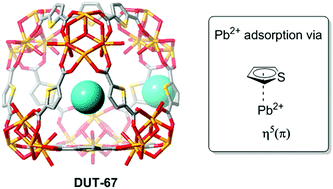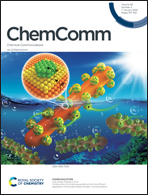Removal of lead ions from water using thiophene-functionalized metal–organic frameworks†
Abstract
Heavy metal ion contamination in water is a hazard to all life. The removal of such ions from aqueous media by porous metal–organic frameworks (MOFs) is a growing field. Herein we report the use of thiophene containing MOFs, notably DUT-67, for the removal of Pb2+ ions from water under both batch and flow conditions with a max loading of 98.5 mg Pb2+ per g MOF. Solution-phase 207Pb NMR spectroscopy and an observed decrease in adsorption with non-thiophene containing systems support a mechanism of adsorption via a putative 6π-η5-thiophene–Pb2+ coordination.



 Please wait while we load your content...
Please wait while we load your content...